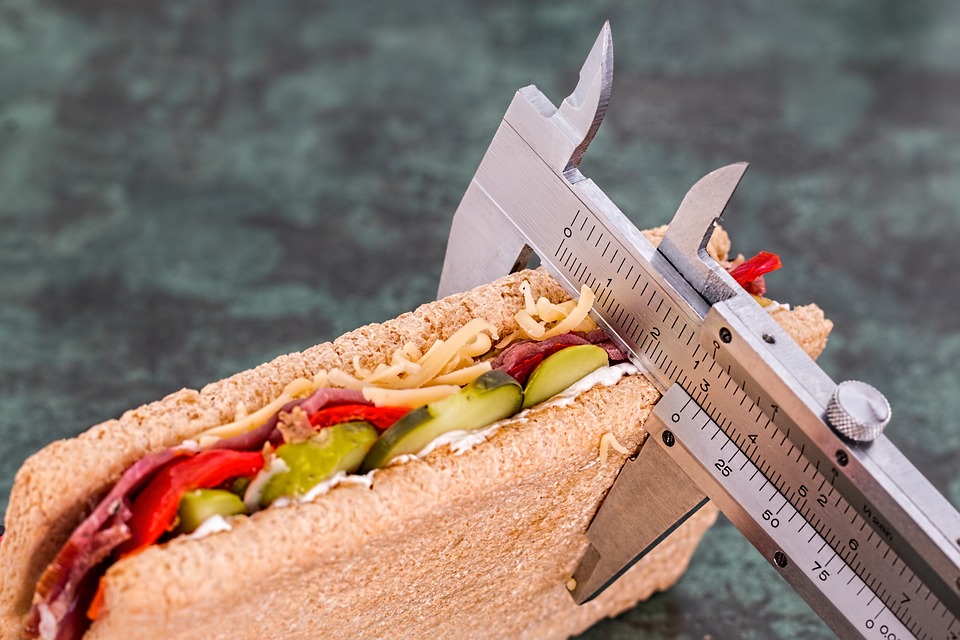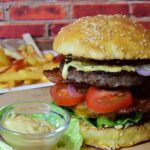A recurring method frequently used by women in the pursuit to reduce weight is sticking to consuming only very limited amounts of food. These sort of regimens can be unfairly judged as rigorous or even harmful. Though it has been well documented, many female individuals have tried this approach and achieved positive results in regards to shedding pounds.
The mixed reviews can be confusing. Figuring out what is best for your physical health and workout regime can be challenging. In this article, we will provide a detailed analysis of restrictive diets and how they can influence your well-being and weight.
What Is A Restrictive Diet?
Any kind of diet that limits major food groups or calories with the intention of shedding pounds or lessening fat is considered a restrictive diet.
How restrictive diets actually work: the 5 principles of weight loss
After all, many weight loss diets seem diametrically opposed. Individuals can regularly shed pounds and vastly enhance their wellbeing, either by embracing the Paleo diet or utilizing Weight Watchers. What are some of the fundamental principles that allow all of these things to be successful, especially for weight loss?
1. Adding Structure
It is difficult for people to make food decisions when nothing is forbidden; they become confused with the abundance of options, leading to exhaustion and doing worse selections.
We have a fixed number of choices we can contemplate and sort through in order to arrive at a decision before we simply surrender and take the effortless route instead (i.e. the croissant.)
Implementing regulations and guidelines can assist us in making simpler food choices. Having a restriction on a particular type of food (fats, carbohydrates) simplifies meal choices. Do not bother to ponder whether it is possible to consume a container of Maltesers on a low-carb diet as it is not allowed. Breaking the rules.
The main point is that regulations give us a logical framework for making food selections which can make the process simpler. Anything that makes it easier for us to stay on track is the ideal outcome when it comes to losing weight. Staying committed to the diet is seemingly little, yet it is the most critical factor in beating your weight loss goals.
2. Caring About What You Eat
You have to be more mindful of your food choices when you switch up your diet. Research suggests that keeping a food diary can lead to twice the amount of weight loss compared to those who don’t.
It’s so easy to misjudge how much you’re eating. An investigation conducted in 2018 by the Office for National Statistics discovered that Britons are taking in twice as many calories as they imagine they are. Many individuals underestimate the amount of food they consume, even when they are trying to be truthful.
The conclusion is that when we are conscious and mindful of what we eat, we know precisely what it is we are consuming. We are increasingly paying more attention to our diet, and when we are more mindful of what we eat, our choices will be healthier.
3. Increasing Wholefood Intake
When attempting to adopt a healthier diet, we generally opt for more natural, unrefined whole foods. All diets generally concur that we ought to consume more unprocessed foods.
No matter what type of diet you are following, all healthy plans will recommend consuming more natural foods like meat, fish, nuts, salads, tubers, vegetables, fruits and unprocessed grains.
Why does this matter for weight loss? Wholefoods are often:
- Less calorically-dense than their processed counterparts. And yet there’s more of them: you can easily bulk up meals with extra vegetables, with a very small increase—relative to volume—in calories.
- Contain more fibre
- Contain more water (particularly vegetables and fruit)
- Contain more nutrients
- And as a result are more satiating . Leading us to our next principle:
4. Improving Satiety
Satisfaction is likely the most overlooked idea in trying to lose weight. In other words, it describes how filling and satiating a food is after you’ve eaten it.
It is important to understand that no matter what diet you follow, the law of energy balance remains the same. In order to lose weight, it is essential to use more energy than what we consume, this is non-negotiable.
We should pay special attention to foods that can make us feel satiated for an extended period of time, which in turn will likely lead to us reducing our consumption naturally. This is a huge win.
The conclusion of this text is: If you are knowledgeable about which foods are more filling and combine this with your own likes and dislikes, you can design your diet using these types of meals that will keep you full for longer, thus minimizing the amount of calories consumed without having to keep track of them.
Manipulate satiety, master weight loss.
5. Increasing Protein
One more thing that usually goes hand in hand with the rise in wholefoods in diets that aim to lose weight is a boost in protein intake.
No matter if you choose to go with a low-carbohydrate or low-fat meal plan, the result will usually be an increase in your dietary protein intake.
Your intake of food consists of carbohydrates, fats, and proteins in general.
- If you lower your fat intake, you need to make up the deficit. Carbohydrate intake and protein intake will increase.
- If you lower your carbohydrate intake, you need to make up the deficit. Fat intake will likely increase, but so will protein.
Encouraging the consumption of wholesome food almost always results in an elevation of protein intake. It is possible, although not very frequently, to bypass the increase in weight loss that happens when you incorporate protein into your diet, but the potential gains are usually too good to pass up.
Why? Protein is the most satiating macronutrient. A single chicken breast is more filling, compared to its weight, than almost any other food. And it’s pretty hard to overeat chicken breast.
Protein also has the highest thermic effect of the macronutrients , meaning that more of its caloric content is required to digest and absorb it, compared to carbohydrates or fats:
- Fats: 5-15% of energy consumed
- Carbohydrates: 5-15% of energy consumed
- Protein: 20-35% of energy consumed
For example, if you consume 200 calories worth of protein, your body will expend between 40-70 calories in order to process and digest it. Protein has a key role in promoting fullness and maintaining lean muscle mass, and this is quite evident.
It can be concluded that increasing protein in your diet can lead to greater feelings of satiation, which in turn can decrease the amount of food consumed overall. Consuming both low-fat and low-carb dietary plans usually results in an increased protein intake.
Different Types Of Restrictive Diets
There are countless diverse eating plans available! Throughout the year, trends in dietary habits have changed, with some diets gaining popularity while others have decreased in popularity.
Low Carb Diets
Low carb diets are pretty common right now. These diets make your body switch to burning fat and protein as fuel instead of carbohydrates that it usually uses.
When you consume fewer carbohydrates, your body alters to gain more energy from fat, which results in you generally burning more fat too.
Low carb diets can also:
- Lower blood pressure
- Reduce blood sugar
- Increase healthy cholesterol in the body
Here are some of the most popular low carb diets out there:
Atkins Diet
With the Atkins diet, you can consume an unlimited amount of food as long as you steer clear of high-carbohydrate items.
People on the high protein diet tend to feel quite sated after their meals because the protein content curbs their hunger, thus avoiding overdosing on food. Overall, people tend to lose weight on this diet.
When it initially gained attention, this diet was looked at skeptically, yet now the majority of people comprehend that it can provide some health advantages.
This diet is fit into four phases:
Phase 1: Consume fewer than 20 grams of carbs daily for a period of two weeks. Consume a lot of protein, high in fat, and low in carbohydrates such as leafy green plants. This helps to kick start the weight loss.
Bring back nuts, fruits, and low-carbohydrate vegetables in your food consumption gradually in Phase 2.
Once you’re nearing your desired weight, gradually incorporate more carbs until your weight loss plateau is stabilized.
In Phase 4, you can consume an unlimited amount of carbohydrates without seeing an increase in your body weight.
Keto Diet
The ketogenic diet has been gaining a lot of traction recently. This diet causes the body to draw from its stored fat, rather than carbohydrates, for energy generation. This is similar to other low carbohydrate diets. This can aid individuals in shedding pounds and maintaining an absence of excess fat.
Many people feel that fats and proteins lead to a more satiated feeling than carbohydrates. They usually consume fewer calories overall because they experience a greater feeling of contentment when eating what they do.
Some individuals and even well-known personalities such as Vanessa Hudgens practice both a keto diet and intermittent fasting.
Later on, I’ll explain fasting further, but it operates in a comparable way to keto. Your body is made to burn stored fat as energy when this occurs. This is why these two diets can work together.
People often dispute the concept of the keto diet because of the shortage of micronutrients it can cause by excluding certain fruits and vegetables.
It is essential to incorporate many vegetables into your diet if you are on the keto diet, however it is important to not exceed your allowable carbohydrate amount. Veggies that are ideal to consume while on a ketogenic diet are cucumbers, broccoli, onions, squash, artichokes, spinach, kale, asparagus, cabbage, and cauliflower.
Paleo Diet
Individuals who follow the Paleo diet consume only items that were likely consumed by hunter-gatherer societies. They consume a significant amount of lean protein, fruits and veggies, and nuts while avoiding refined sugars, milk products, grains, and other pre-packaged items.
Generally, the majority of people who follow this eating plan reduce the amount of carbohydrates they consume, increase their protein intake, and decrease their total caloric intake. They end up becoming satiated from the food they consume and the fewer number of calories assist in their weight-reduction process.
Fasting Diets
Intermittent fasting works by disrupting your body’s metabolism. By eating several meals per day, you are continually supplying your body with energy. This isn’t a bad thing. Nevertheless, when you interrupt the habit and shock your body, it will then have to use stored fat for energy.
It is essential to keep in mind that fasting diets do not involve purposely decreasing your calorie intake. When you’re fasting, you don’t eat. When you are not fasting, you should eat enough to make yourself feel full.
By reducing the amount of time devoted to eating in any given day, the majority of individuals will generally consume less calories when fasting. They tend to consume healthier items and avoid sugary snacks, snacks in excess, and beverages that are high in calories.
As a result, fasting diets tend to work in four ways:
- Increasing your metabolism .
- Forcing your body to use stored fat for energy.
- Eating fewer calories overall (even if this isn’t intentional!).
- Reducing the hormones insulin and leptin , which are responsible for storing fat.
Here are some of the most popular types of fasting:
Crescendo Method
You can try fasting for the majority of the day (12-16 hours) and then allow yourself to consume food for the remaining hours (8-12 hours). Most people (especially beginners!) fast overnight. The majority of folks cycle between days when they fast and days when they do not fast over the course of one week.
16/8 METHOD
Fast for 16 hours and eat for 8 hours. Alternate days of fasting and non-fasting.
Limiting your eating to an 8-hour period can be beneficial in enhancing your metabolism and promoting weight loss.
24-HOUR FAST
Fast for 24 hours straight beginning at the time you awake. Eat normally for the rest of the week. It may be wise to consult your doctor before proceeding with this.
Calorie Restrictive Diets
People on calorie restrictive diets must consume fewer calories than what they normally eat on a daily basis. In this diet, shedding pounds is a matter of easy arithmetic: you use up more calories than you take in.
The amount of calories an individual consumes each day to remain at a consistent weight varies from person to person. The outcome is dependent on your height, physique, level of activity, age, and metabolism.
There is some evidence that calorie restrictive diets have some other health benefits, including:
- Lower blood pressure and blood sugar.
- Reduced risk for diabetes, heart disease, and stroke.
- A decrease in inflammation and thyroid imbalances .
It appears that cutting back on calories may also diminish bone density and cause a loss of muscle mass.
Remember, these diets are NOT about starving yourself. You should reduce your daily calorie intake to a few hundred calories less than what is recommended, but make sure you are still getting all of the necessary nutrients.
Consuming too few calories can have a lasting negative impact on your metabolism, which can put your overall wellbeing at risk, while also making it harder to achieve your desired weight reduction.



